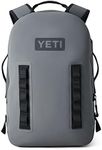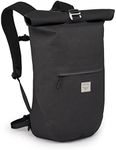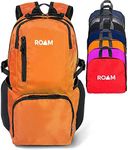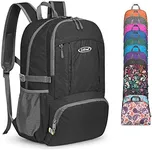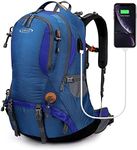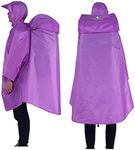Buying Guide for the Best Water Proof Backpacks
Choosing the right waterproof backpack can make a significant difference in keeping your belongings safe and dry, whether you're hiking, commuting, or traveling. The key is to understand the various features and specifications that make a waterproof backpack suitable for your needs. Here are some important specs to consider and how to navigate them to find the best fit for you.Waterproof RatingThe waterproof rating indicates how well the backpack can protect its contents from water. This is crucial if you plan to use the backpack in wet conditions. Ratings can range from water-resistant to fully waterproof. Water-resistant backpacks can handle light rain but may not protect against heavy downpours or submersion. Fully waterproof backpacks are designed to keep water out even in the most extreme conditions. Consider your typical usage scenarios: if you expect heavy rain or water exposure, opt for a higher waterproof rating.
MaterialThe material of the backpack plays a significant role in its waterproof capabilities. Common materials include nylon, polyester, and PVC. Nylon and polyester are often treated with a waterproof coating, while PVC is inherently waterproof. The choice of material affects durability, weight, and flexibility. For rugged outdoor activities, a more durable material like PVC might be preferable. For everyday use, a lighter material with a waterproof coating could be sufficient.
Seams and ZippersSeams and zippers are potential weak points where water can seep in. Look for backpacks with sealed or welded seams and waterproof zippers. These features ensure that water cannot penetrate through the stitching or zipper openings. If you plan to use the backpack in very wet conditions, these features are essential. For less demanding environments, standard seams and zippers with water-resistant flaps might be adequate.
CapacityCapacity refers to the volume of the backpack, usually measured in liters. This determines how much you can carry. Smaller capacities (10-20 liters) are suitable for day trips or commuting, while larger capacities (30-50 liters or more) are better for multi-day hikes or travel. Think about what you typically carry and choose a capacity that fits your needs without being overly bulky.
Comfort and FitComfort and fit are crucial for any backpack, especially if you plan to carry it for extended periods. Look for adjustable straps, padded back panels, and ergonomic designs. A good fit distributes weight evenly and reduces strain on your back and shoulders. Try the backpack on, if possible, to ensure it fits well and feels comfortable. Consider your typical load and how long you'll be carrying the backpack to determine the level of comfort you need.
Additional FeaturesAdditional features can enhance the functionality of your waterproof backpack. These might include external pockets, hydration bladder compatibility, attachment points for gear, and reflective elements for visibility. Think about your specific needs and how these features might benefit you. For example, if you hike often, hydration compatibility and gear attachment points could be very useful. For commuting, external pockets for easy access to essentials might be more important.




